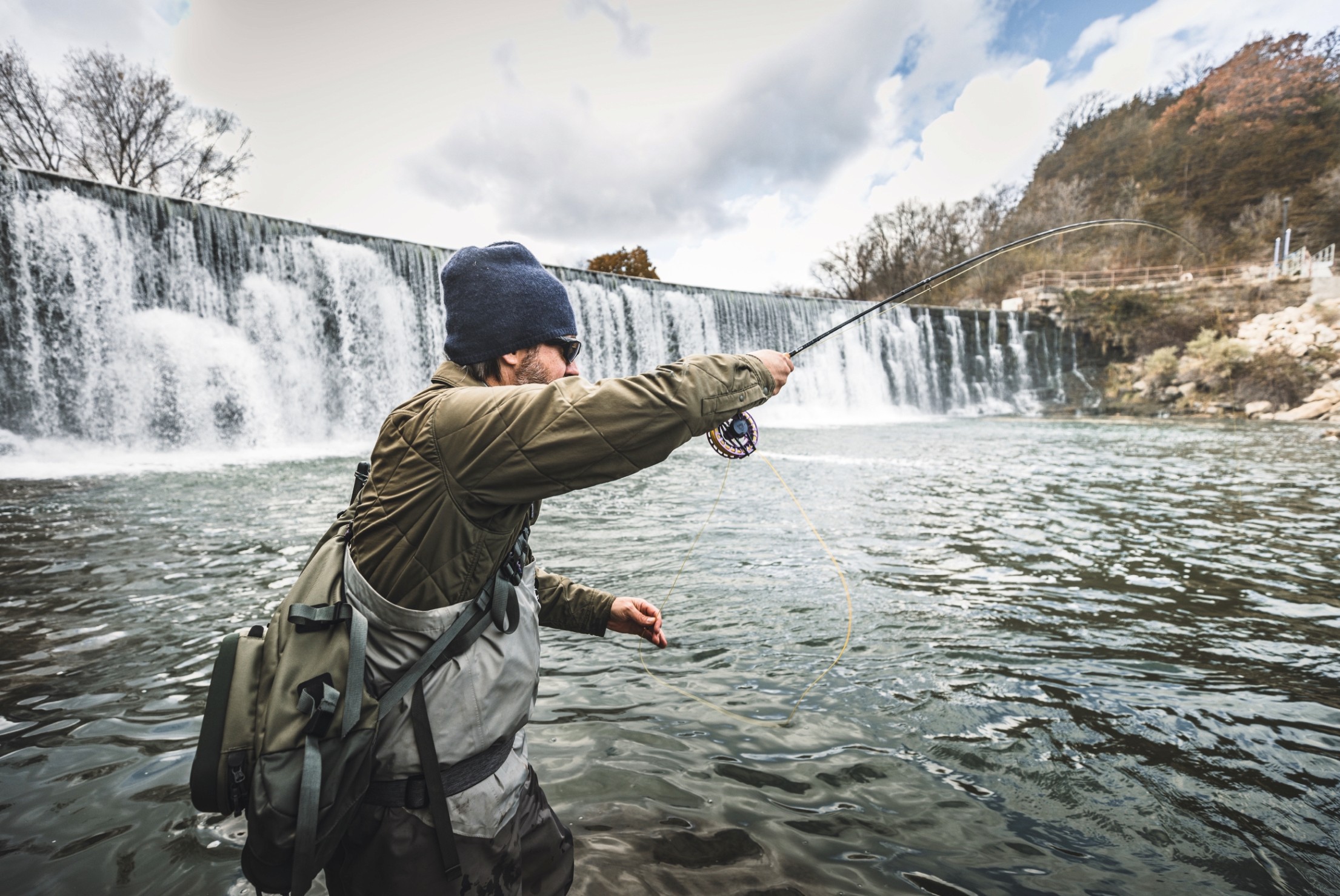DISTANCE CASTING /// WHY YOU NEED TO CAST 100 FEET
Sep 27, 2018
It was my first paid/guided fly fishing trip in southern Florida. Standing on the bow of the flats boat, all of the sudden my guide points out a moving object about 75 feet away. It was a LARGE PERMIT! I make a quick cast that reaches about 50 feet, still 25 feet short of where I need to be casting. I quickly strip my line in for a second cast only to see that moving object jet away from the boat at full speed... I missed my chance! Uggg if only I made a better cast! That was many years ago, but that moment changed me as an angler. I no longer settled for being an average caster and I began to work diligently on crafting my cast!
You might be thinking "I don't need to be able to cast far to catch fish". 99% of trout are caught in the 15' to 40' range... so why would I ever learn to cast any further? Here are a few good reasons you need to learn to cast 100 feet...
1. Distance casters are accurate casters - If you can cast an entire line chances are you accurately hit a target at 20', 30', 40', 60', etc... Distance casting requires excellent technique which translates into an accurate short cast.
2. Salt-water fly fishing requires distance - If you live in trout country and only fish creeks, distance probably doesn't matter much to you, but once you get into salt-water everything changes. Salt-water often requires a quick, accurate, and long distance cast to get the fly where you need it. There is nothing more frustrating than paying top dollar for an exotic guided flats trip only to miss fish after fish because of an underdeveloped cast.
3. Distance is the answer on windy days - Being able to generate high line speeds and tight loops pays off in windy conditions. The techniques you use to cast far are very useful when the wind becomes a challenge.
4. It's fun! - Let's be honest, fly fisherman are a slightly different breed of people. We tend to be passionate and even slightly obsessive about our sport, our waters, and our fishing! Distance fly casting is fun for us passionate anglers! Some of the many joys of being a fly angler are feeling the line load the rod, seeing that tight loop, and making a perfect cast.
HOW TO IMPROVE YOUR CASTING DISTANCE
I have a short list of things to learn and practice in order to learn how to cast 100 feet with a single hand fly rod. I can consistently cast 100' with a 9' 4wt fly rod and a standard fly line. It's not as hard as you might think. This isn't an exhaustive list but a great place to start. If you can learn all these techniques you will be casting 100' in no time! This list isn't in any particular order. Youtube also has some great videos on distance casting!
1. Learn to form tight loops - Tight loops look like a long sideways U shapes. There are plenty of books and videos on forming quality loops. TIGHT LOOPS ARE NOT OPTIONAL WHEN IT COMES TO ACHIEVING DISTANCE!
2. Practice on a lawn - One of the best ways to improve your cast is to just go to a park and practice, practice, practice. I often find a park a better place to practice than even a body of water; you just have to ignore the ignorant, I mean innocent by-standards who make comments like "you catching anything"....
3. Straight rod path - Essentially this means your rod tip needs to make a straight line as it travels back and forth while casting. A straight rod path is a requirement to creating tight loops. If you find your loops tailing or being overly open... check your rod tip path.
4. Learn the double haul - Again youtube is a great resource here. The double haul often feels strange when you first learn it, but eventually it will become second nature.
5. Learn to carry line in the air - The more line you can carry in the air the further you can reach. To hit 100' I like to carry about 60'-70' in the air and shoot about 40 feet. If you can carry 60' with a good double haul 100' is easily reachable.
6. Forget the 10-2 thing - When you are first learning how to cast the 10-2 principle can help, but as you learn to cast further, your casting motion needs to change. You have to extend your reach in order to generate fast line speed.
7. Creep is bad... creep is good - Creep typically means your hand drifts forward too early and takes away from the power of your cast. That's bad... What you want to do is allow your hand to slowly creep (after a hard stop) towards your line creating more power in your cast. This often looks like a slight rocking motion with distance casters.
8. Create a hard stop at the end of your cast - A hard stop allows the bend in the rod to release creating forward trajectory. A firm grip will help you to create a hard stop as you are casting.
We hope some of that info helps! Now get to the park and practice, practice, practice!
